Everything you need to know about making perfect BBQ Ribeye Steak. If you’re wondering how to grill ribeye steak for the best result every time, you’re in the right spot!

We grill steaks regularly during the summer months, and ribeye is always our favorite due to its impeccable fat content and juiciness.
Because I get so much joy out of juicy steak, I thought it wise to share this bbq ribeye steak recipe for my fellow meat lovers.
Conquering perfectly grilled ribeye steak is actually pretty basic once you have a few simple steps down.
If you’re looking for simple instructions on how to grill ribeye steak, jump straight to the recipe to have all the answers immediately.
For those who aren’t as experienced with grilling steaks, I recommend reading through the post because there is a lot that goes into achieving a perfect outcome.
Tips for the Perfect Ribeye Steak:
- Choose a quality steak
- Become an expert at using a meat thermometer
- Dry brine the steak ahead of time if you have the time.
How to Choose A Good Ribeye:
Starting with a great steak puts you several steps closer to enjoying the best steak of your life.
But how do you choose the perfect ribeye steak?
For grilled ribeye, I recommend purchasing thicker steaks so that the inside of the meat doesn’t cook too quickly before the outside of the meat gets a great sear. Aim for 1-inch steak or thicker.
When pan-searing ribeye in a skillet, thinner steaks are fine because you’re able to get the skillet hot enough to sear the outside without overcooking the inside. This isn’t the case with grilling the majority of the time, which is where thick steaks go to thrive.
Select steaks that have good fat marbling around the outside and some intermuscular fat. For this reason, picking up USDA Prime steaks that have Prime level fat marbling ensures you’ll end up with the most flavor and best texture.
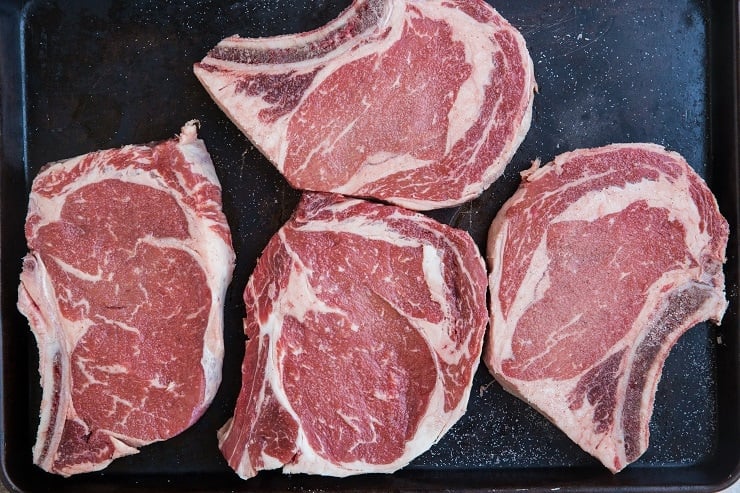
Look for steaks that have an impressive deposit of kernel fat, which is the fat just before the spinalis on the chuck end of the steak. This is typically the ribeye lover’s favorite piece of meat.
Intramuscular fat not only provides delicious flavor, but it also helps keep the meat moist and ensures the steak cooks evenly.
My personal preference is prime beef and when I can find prime level marbling in a grass-fed steak, I’m all in.
Which is Better Bone In or Boneless Ribeye:
Whether you get boneless ribeye steaks or bone-in ribeye is entirely up to your own personal preference.
Those who enjoy medium or medium-rare steak will often go for boneless ribeye because the meat that is closest to the bone tends to turn out overcooked in the eyes of someone who loves rare steak.
For those who enjoy a deeper cook on their steak (medium to well-done) will often prefer meat that is closest to the bone.
All of that said, there are certain individuals who swear bone-in steak is superior, while others insist there is no difference in taste and texture between the two.
Regardless of the cut of meat, you’re guaranteed a delicious result with plenty of fat marbling and a the use of an instant-read meat thermometer.

Use a Meat Thermometer:
The best way of knowing for certain what level of doneness you’re going to end up with when you cut into a steak is by using a meat thermometer.
Many people follow the poke test, which works great for seasoned grillers and those who have a lot of experience with cooking steak; however, using a digital thermometer to verify the internal temperature is the best way of achieving your desired degree of doneness.
We have even gotten fancy over time and we use heat-resistant wireless thermometers that tell us the temperature of the steak at all times. This is definitely not mandatory, but if you’re a perfectionist it is a very useful tool to own.
Which is Better Charcoal Grill or Gas Grill?:
Just like most things in life, whether you find a gas grill or a charcoal grill to be superior is a matter of personal preference.
I love the flavor that comes off a charcoal grill, so that is what we use. That said, many people find operating a gas grill to be easier, quicker, and lower fuss.
If you prioritize ease of cooking, a gas grill may be the best option, but if you’re looking for the best BBQ flavor, charcoal all the way.
Be sure to use good charcoal for the most flavorful tender steaks. We use lump charcoal.
Dry Brine Ribeye Steak:
Dry brining a ribeye simply entails sprinkling kosher salt on both sides of the steak as well as the edges and allowing it to sit for a certain period of time.
For the best result, dry brine ribeye for at least 1 hour before grilling (or searing), but even 15 minutes makes a difference.
Simply transfer the steaks to a baking sheet or a large plate, sprinkle both sides with sea salt, and transfer the steaks to the refrigerator.
There is no need to cover the steaks with anything, and they should be left open to the air.

How Long To Grill Ribeye on BBQ:
How long do you grill a ribeye per side? In general, a ribeye steak needs 2 to 3 minutes per side total over high heat if you’re cooking over direct heat (a very hot flame, or 450 to 500 degrees F).
Very thick ribeye steaks will require more time (about 4-5 minutes per side) and you may want to use a combination of direct and indirect heat.
Sear both sides of the steak until each side has a great deal of color, then move it away from the flame on a cooler part of the grill to continue cooking until it reaches your desired level of done-ness.
In order to avoid burning the steak, you’ll likely end up flipping the steak several times so that one side isn’t cooking over direct heat for too long.
Now, the more nuanced answer for how long it takes to grill ribeye is it depends.
The temperature of the BBQ, the thickness of the steak, the internal temperature of your steak when you place it on the hot grill, and the fat content of the steak all make a difference in the exact cooking time.
While there isn’t necessarily an exact ribeye grill time, aim for a 2-3 minute per side cook time and use a thermometer to troubleshoot the rest for the perfect steak.
What Temperature to BBQ Ribeye:
If you use a gas grill, preheat your outdoor grill to 500 degrees Fahrenheit for the best results.
For charcoal grills, there isn’t an easy way of knowing the exact temperature of the grill, but you can tell based on the way the coals look whether or not they are ready.
The coals should be much lighter in color (light gray to white with an orange golden glow in the center of the coals) before you start grilling.
Final Cooking Temperatures for Ribeye Steak:
- Rare: 115-120 degrees Fahrenheit
- Medium Rare: 125-130 degrees Fahrenheit
- Medium: 135-140 degrees Fahrenheit
- Medium Well: 145-150 degrees Fahrenheit
- Well Done: 150-155 degrees Fahrenheit
How to Cook the Perfect Ribeye Steak on The BBQ:
Remove the ribeye steaks from their packaging and pat any excess moisture off with paper towels.
Transfer the ribeye steaks to large plates or a baking sheet and sprinkle both sides (and the edges) liberally with sea salt. If you have the time to dry brine the steaks, place them in the refrigerator uncovered for at least 15 minutes, or up to 24 hours.
When you’re ready to grill, bring the steaks out of the refrigerator 10 to 20 minutes ahead of time to bring them to room temperature. If you don’t have time to do this, no sweat.
Scrape any food particles off of the grill grates using a wire grill brush.
Preheat your gas grill to high heat. Set the grill temperature to 500 degrees Fahrenheit if you have the option.
For a charcoal grill, fire up your coals in a coal chimney then transfer them to one part of your grill so that you have the option for direct heat and indirect heat.

We use a Weber Grill and use Char Basket Holder instead of a charcoal chimney and we grill directly over the holder.
Sprinkle both sides of the steaks liberally with garlic powder and black pepper (and any other steak seasonings or dry rub you love).

Place steaks over direct heat on the preheated grill. Sear the steaks for 2 to 3 minutes per side, or until the outside of the steaks has visible grill marks.
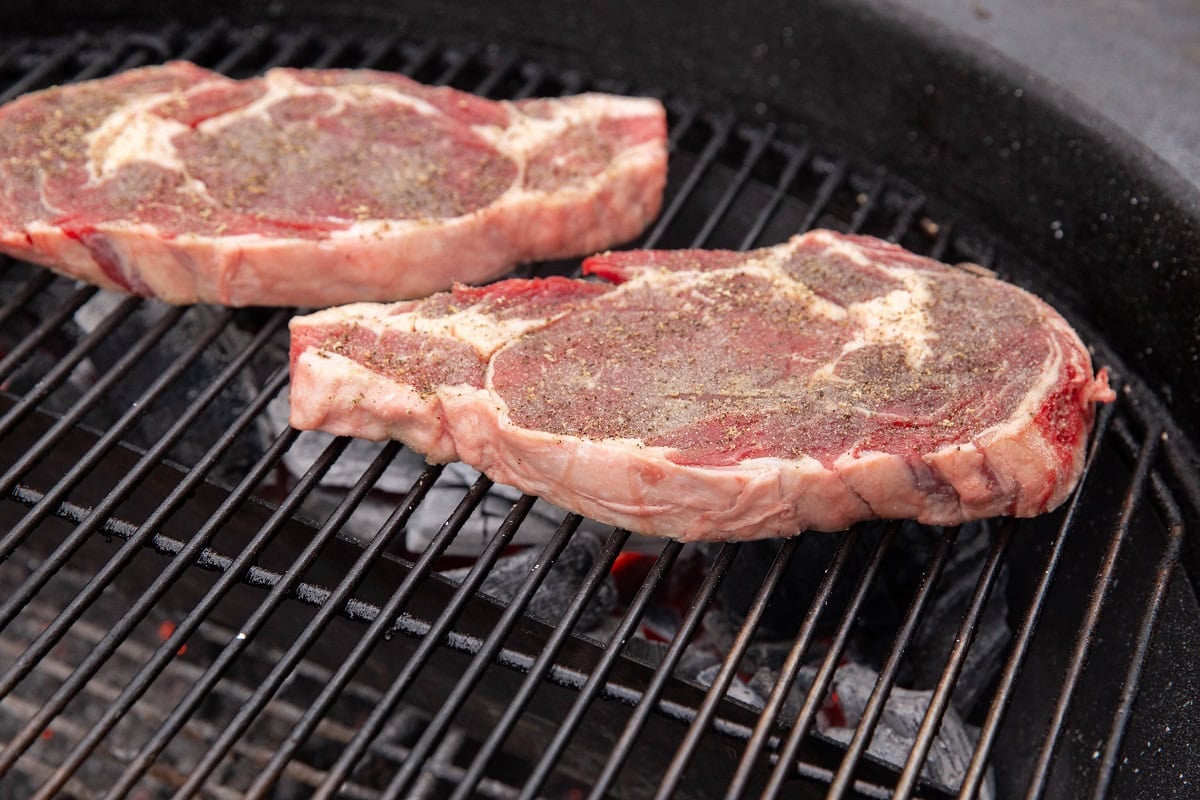
Be sure to use tongs designed for barbecuing to ensure they are long enough to create distance between you and the hot flame.
For crispy fat around the edges, sear the sides of the steak.

Use a digital thermometer to check the temperature of the steaks. For medium-rare, aim for 125 to 130 degrees F, for medium aim for 135 to 140 degrees F.

Remember that meat always continues cooking after you remove it from its heat source. Don’t be afraid to take the steaks off the grill a few degrees early so that the final temperature is your perfect desired doneness after it sits.
Let the steaks rest for at least 10 minutes before slicing into them so that the juices have a chance to distribute evenly throughout the meat.
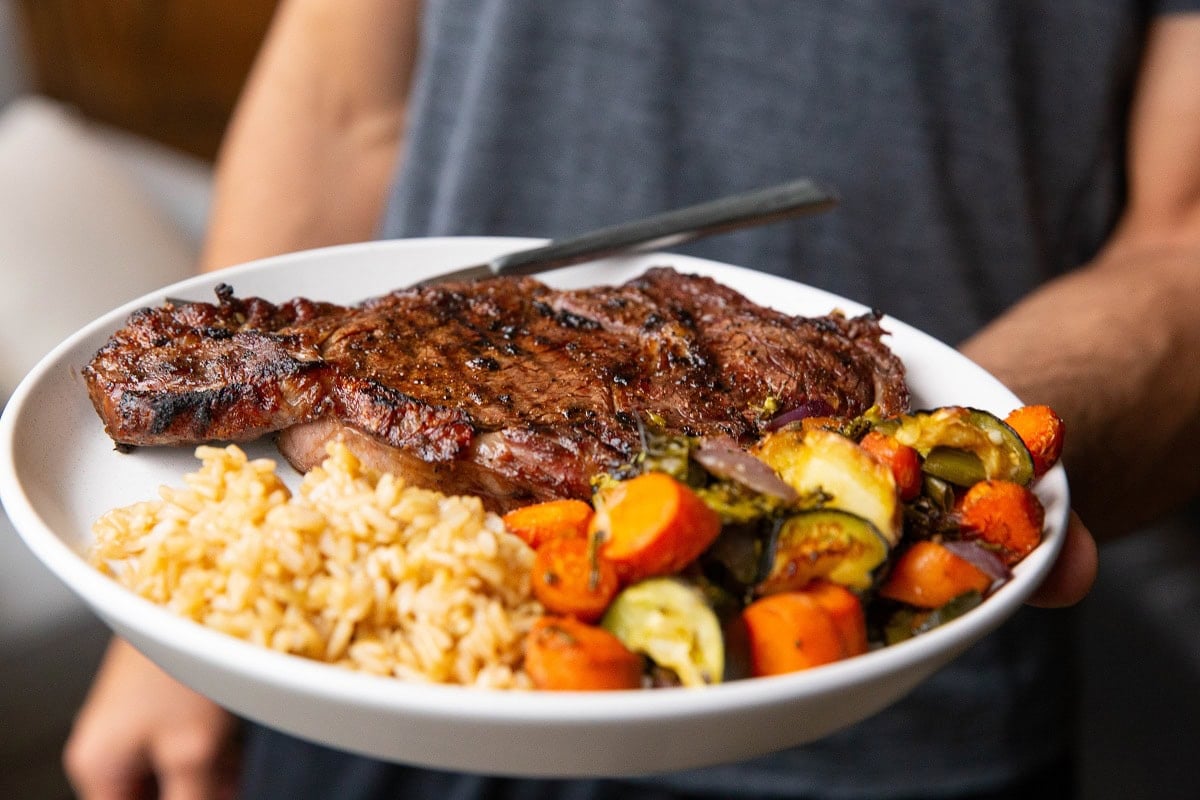
Serve ribeye steaks with your choice of side dishes, and enjoy! You can whip up a compound butter and serve the steaks with a pat of butter.
Store leftover steak in an airtight container in the refrigerator for up to 5 days.
Best Ribeye Steak Seasoning:
A great steak doesn’t need much in the way of seasoning because the quality meat and fat content will be the star of the show.
Sea salt, garlic powder, and freshly ground pepper are my personal go-to seasonings for steak.
You can also use your favorite steak rub or steak seasoning blend, but I find the combination of sea salt, garlic powder and pepper is mouth-watering delicious.
Do you love marinating steak? If so, use my Best Steak Marinade recipe. Just be sure to pat off any excess marinade with paper towels before grilling it to ensure the steak doesn’t go on the grill wet.
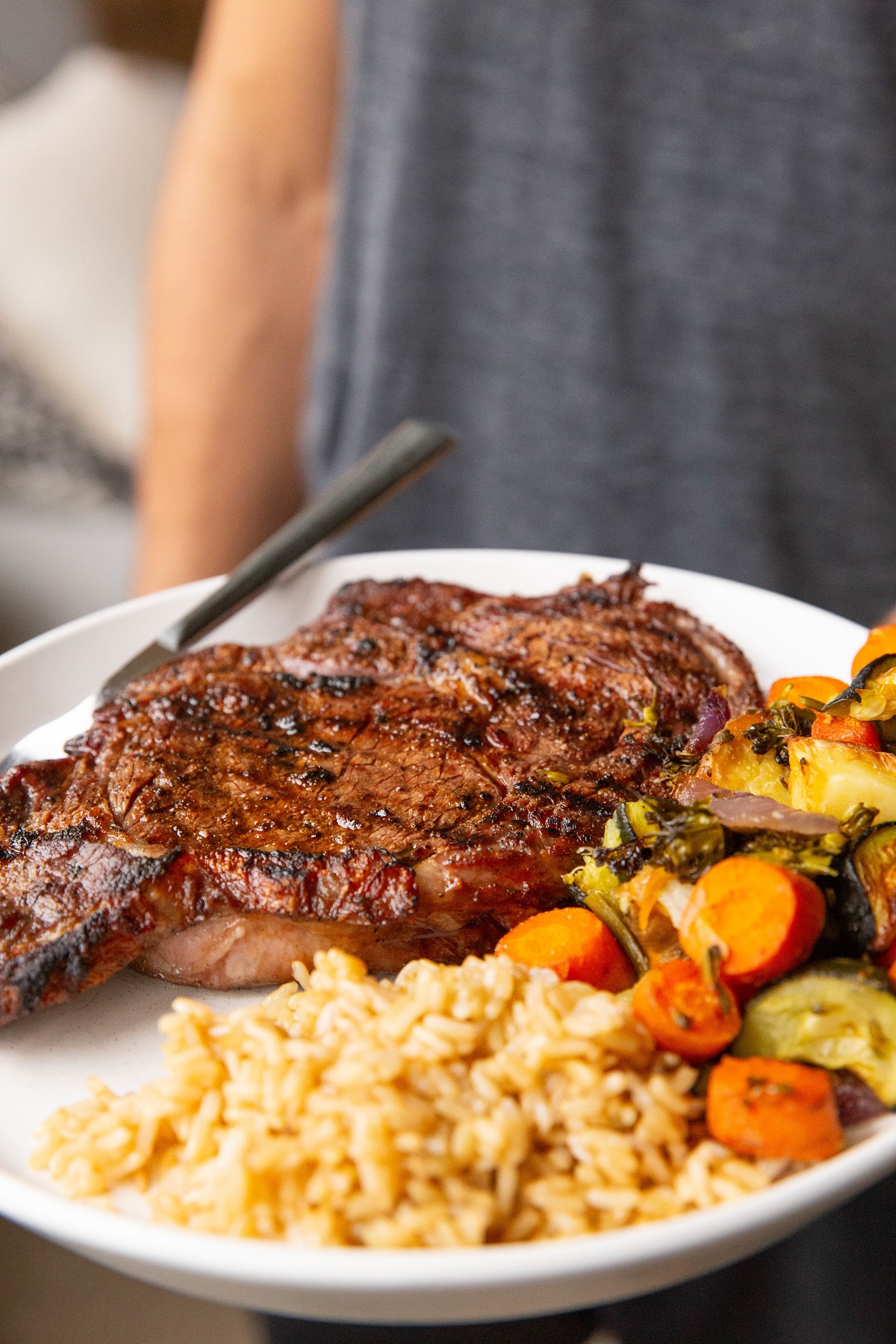
Perfect for special occasions, whip up the best ribeye steaks the next time you have something to celebrate.
What to Serve with Steak:
Looking for side dishes to serve with steak? Here are my favorite sides for steak..
- The Best Broccoli Salad
- Crowd-Pleasing Roasted Vegetables
- Blueberry Avocado Sunflower Seed Chopped Salad
- German-Style Potato Salad with Caramelized Onions
- Zucchini Fritters with Herb-Garlic Aioli
And that’s it! A complete guide to BBQ ribeye steak to ensure you end up with your favorite steak every time!

BBQ Ribeye Steak
Ingredients
- Ribeye steaks*
- sea salt
- black pepper
- garlic powder
Instructions
- Bring the steaks out of the refrigerator 10 to 20 minutes ahead of time to bring them to room temperature. If you don't have time to do this, no sweat.
- Remove the ribeye steaks from their packaging and pat any excess moisture off with paper towels.
- Transfer the steaks to a large plate or baking sheet and sprinkle both sides liberally with kosher salt, black pepper, and garlic powder.
- Scrape any food particles off of the grill grates using a wire grill brush.
- Preheat your gas grill to high heat. Set the grill temperature to 500 degrees Fahrenheit if you have the option. For a charcoal grill, fire up your coals in a coal chimney then transfer them to one part of your grill so that you have the option for direct heat and indirect heat.
- Place steaks over direct heat on the preheated grill. Sear the steaks for 2 to 3 minutes per side, or until the outside of the steaks has visible grill marks. Be sure to use tongs designed for barbecuing to ensure they are long enough to create distance between you and the hot flame.
- For crispy fat around the edges, sear the sides of the steak.
- Use a meat thermometer to check the temperature of the steaks. For medium-rare, cook to 125 to 130 degrees Fahrenheit, for medium grill to 135 to 140 degrees Fahrenheit. Remember that meat continues to cook after you remove it from its heat source. Don’t be afraid to take the steaks off the grill a few degrees early so that the final temperature is your perfect desired doneness after it sits.
- Let the steaks rest for at least 10 minutes before slicing into them so that the juices have a chance to distribute evenly throughout the meat.
- Serve ribeye steaks with your choice of side dishes, and enjoy!
Notes
- Rare: 115-120 degrees Fahrenheit
- Medium Rare: 125-130 degrees Fahrenheit
- Medium: 135-140 degrees Fahrenheit
- Medium Well: 145-150 degrees Fahrenheit
- Well Done: 150-155 degrees Fahrenheit
Nutrition
This post contains affiliate links, which means I make a small commission off items you purchase at no additional cost to you.

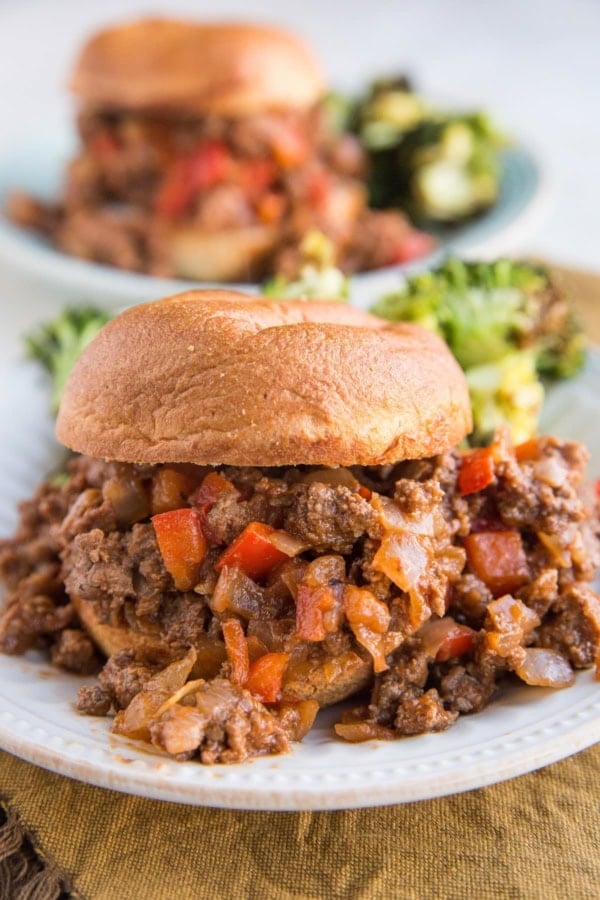
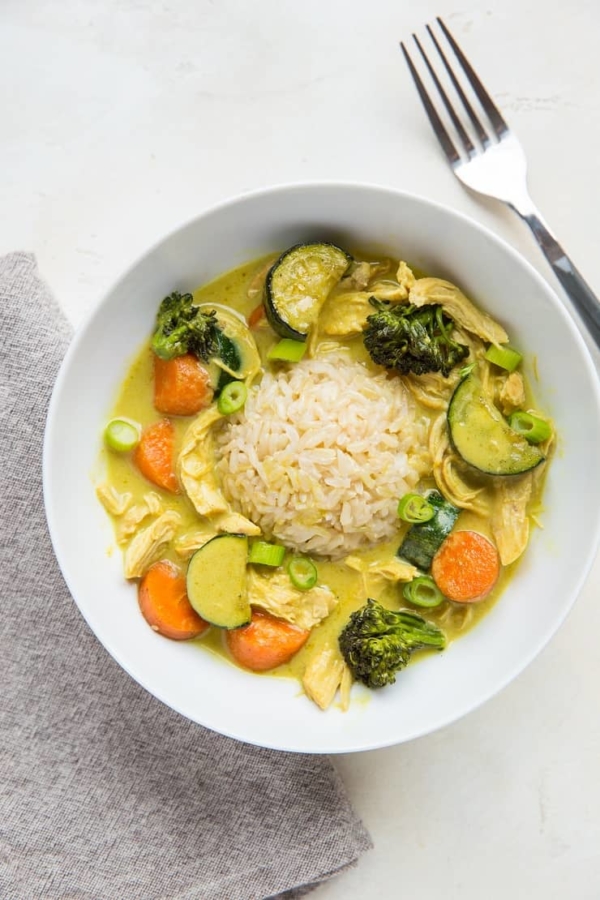
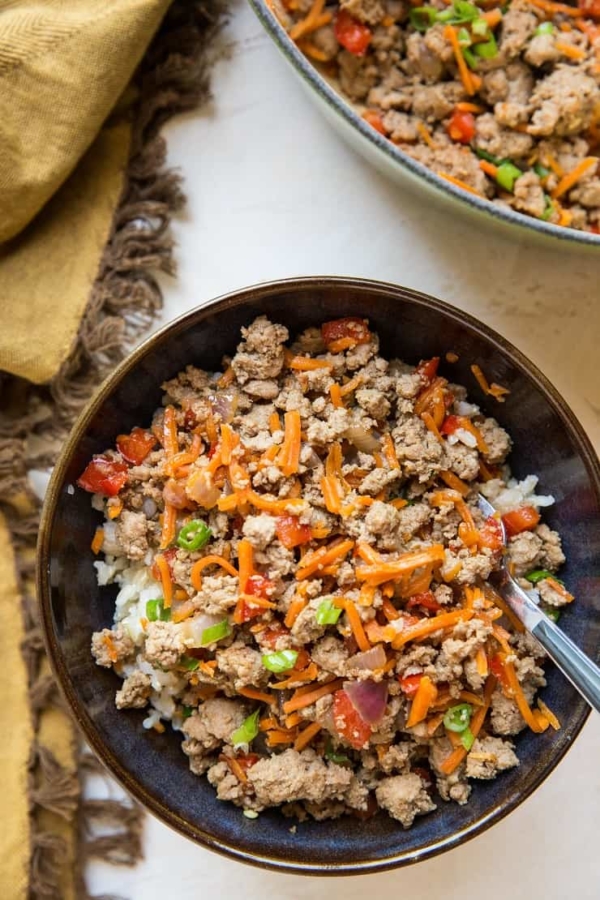












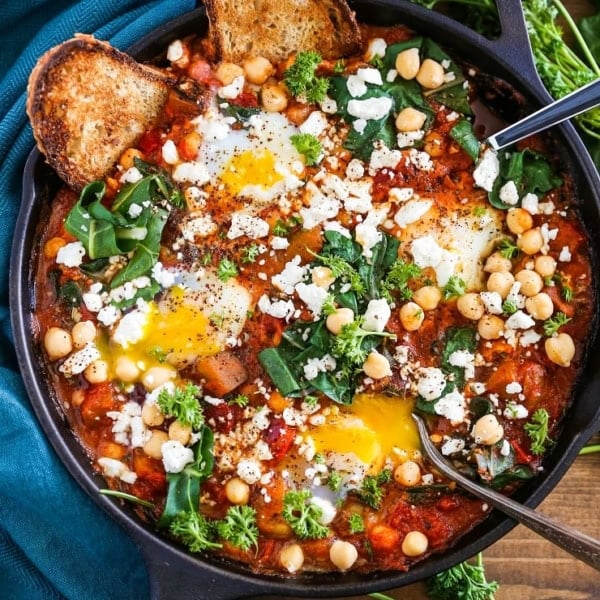


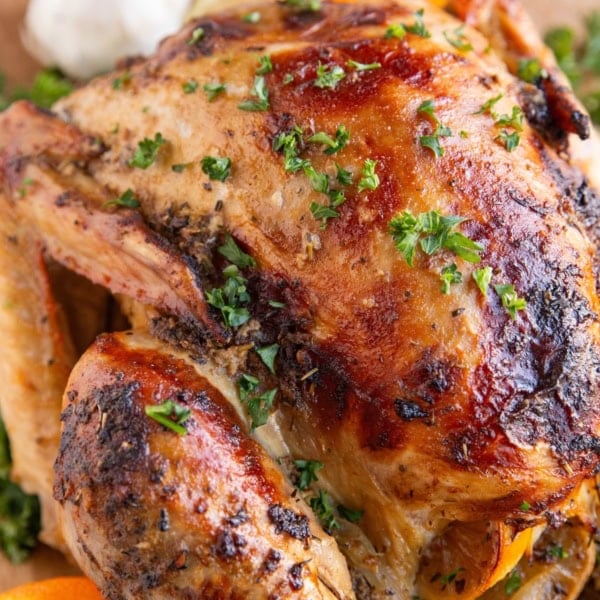
No oil on the steaks while prepping ??
Hi Robert! There’s no need to add oil to the steaks before grilling them 🙂 The fat content of the steaks helps them cook evenly and protects the meat from burning. Nevertheless if you usually brush your steaks with oil, feel free to do so.
Ima liking it.
Thrilled to hear it!